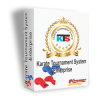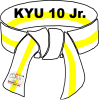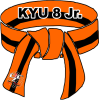Ezreal, the Prodigal Explorer, hails from Piltover, driven by his insatiable curiosity for ruins and treasures. In his youth, he stumbled upon a mysterious Atlantean ruin where he discovered a powerful artifact—a magical gauntlet—that granted him extraordinary abilities. When you embark on your journey, mmowow accounts can lend a helping hand when you need help.
Hero Positioning and Skill Introduction:
Positioning: Ezreal is a ranged physical damage dealer, specializing in high damage output with some mobility.
Skills:
Passive - Rising Spell Force: Every time Ezreal hits an enemy with his abilities, his attack speed increases, allowing him to ramp up his damage output over time.
Q Ability - Mystic Shot: Ezreal fires an energy bolt, dealing physical damage. Landing Mystic Shot reduces the cooldowns of his other abilities. This is his primary source of damage.
Gameplay and Skill Order:
In terms of skill order, Ezreal typically maxes his Q ability (Mystic Shot) first for maximum damage output. After that, he usually prioritizes his E ability (Arcane Shift) for increased mobility and safety, followed by his W ability (Essence Flux), and finally, his ultimate (Trueshot Barrage) whenever available.
Runes:
For runes, Ezreal often takes Precision as his primary tree and Sorcery as his secondary.
Precision:
Keystone Rune: Press the Attack or Lethal Tempo - These runes amplify his damage output in extended fights.
Triumph - Provides him with sustain in fights, allowing him to stay alive longer.
Legend: Bloodline - Grants him lifesteal for better sustainability.
Coup de Grace - Enhances his damage against low health targets.
Sorcery:
Manaflow Band - Helps with his mana sustain in the laning phase.
Transcendence - Gives him additional cooldown reduction, allowing for more frequent ability usage.
Items:
Ezreal typically builds items that enhance his damaged output, provide utility, and improve his survivability.
Core Items:
Manamune/Muramana - Provides mana sustain and boosts his damage significantly.
Divine Sunderer - Offers him a mix of damage and sustain, especially against tanker opponents.
Ionian Boots of Lucidity - Cooldown reduction for more frequent abilities.
Blade of the Ruined King - Provides life steal, attack speed, and a passive that synergizes well with his kit.
Situational Items:
Guardian Angel - Offers a second chance in team fights.
Mortal Reminder or Lord Dominik's Regards - Against heavy armor-stacking opponents.
Edge of Night - Provides a shield and additional damage.
Early, Mid, and Late Game Strategies:
Early Game: Focus on farming and poking with Mystic Shot to harass opponents. Ezreal should play safe and look for opportunities to capitalize on enemy mistakes or jungle ganks.
Mid Game: Start roaming and participating in skirmishes. Ezreal should look to use his mobility to catch out opponents and secure objectives with his team.
Late Game: In team fights, Ezreal should position himself carefully to deal damage safely. He should use Arcane Shift to reposition and Mystic Shot to poke and deal consistent damage from a distance. Trueshot Barrage can be used to soften up opponents before engagements or to finish off low-health enemies.
Combos:
Basic Poke Combo: Mystic Shot (Q) -> Arcane Shift (E) -> Mystic Shot (Q)
All-In Combo: Arcane Shift (E) -> Mystic Shot (Q) -> Essence Flux (W) -> Auto Attacks -> Trueshot Barrage (R)
Recommended Team Compositions:
Strong Teamfight Composition:
Top: Tank/Engager (e.g., Malphite)
Jungle: Initiator (e.g., Sejuani)
Mid: AoE Mage (e.g., Orianna)
Support: Enchanter/Engager (e.g., Leona)
ADC: Ezreal
Scaling/Farming Composition:
Top: Split Pusher (e.g., Fiora)
Jungle: Farming/Scaling (e.g., Kayn)
Mid: Scaling Mage (e.g., Cassiopeia)
Support: Peel/Protect (e.g., Janna)
ADC: Ezreal
Personal Strength Composition:
Top: Carry (e.g., Irelia)
Jungle: Assassin (e.g., Kha'Zix)
Mid: Roaming Assassin (e.g., Talon)
Support: Playmaker (e.g., Thresh)
ADC: Ezreal
Each composition should complement Ezreal's strengths and cover his weaknesses, allowing him to thrive in various team scenarios.
Ezreal vs. Gragas Lane Matchup
Early Game:
Ezreal: In the early game, Ezreal should focus on farming and poking Gragas with his Mystic Shot whenever possible while staying safe from Gragas' engagement potential. Ezreal's mobility with Arcane Shift can help him dodge Gragas' Barrel Roll and Body Slam.
Gragas: Gragas should look to utilize his Barrel Roll to poke Ezreal and threaten an all-in engagement with Body Slam and Explosive Cask. He should also attempt to disrupt Ezreal's farm with Barrel Roll zoning.
Mid Game:
Ezreal: During the mid-game, Ezreal should continue farming and look for opportunities to roam and participate in skirmishes. He should be cautious of Gragas' engagement potential in team fights and use Arcane Shift to reposition and avoid being caught out.
Gragas: Gragas can transition into a playmaking role in the mid-game, looking to catch out Ezreal or other priority targets with Explosive Cask. He should also prioritize vision control to set up picks and objectives.
Late Game:
Ezreal: In the late game, Ezreal's damage output becomes significant, especially with a fully stacked Manamune. He should position carefully in team fights, using Mystic Shot to poke down enemies from a distance and reserving Arcane Shift as an escape tool if Gragas tries to engage him.
Gragas: Gragas' role in team fights is to disrupt the enemy team with Explosive Cask, particularly by separating their carries from the rest of their team. He should look for opportunities to catch out Ezreal or other squishy targets with well-timed engagement.
Why Ezreal is Popular and Suitable for Players:
Skill Expression: Ezreal's kit provides a high skill ceiling, allowing players to showcase their mechanics with precise skill shots and strategic use of Arcane Shift.
Safe Laning: His long-range poke and mobility make him relatively safe in the lane, allowing players to farm and harass without overextending.
Versatility: Ezreal can adapt to different team compositions and playstyles, whether it's a poke-oriented or all-in-focused strategy. However, for some players, the way to improve the game experience is not only to understand and master a certain hero. Some players pay more attention to the appearance of the hero and choose to buy League of Legends items.
Specific Gameplay Tips:
Farming: Practice last-hitting minions efficiently while maintaining lane control and positioning to avoid Gragas' engages.
Poking: Utilize Mystic Shot to harass Gragas whenever possible, especially when he goes for CS.
Mobility Management: Save Arcane Shift as an escape tool when Gragas attempts to engage or as a follow-up to secure kills in skirmishes.
Ezreal's Advantages and Disadvantages:
Advantages:
High mobility and safety with Arcane Shift.
Strong poke and damage potential with Mystic Shot.
Versatile build paths and playstyles.
Scales well into the late game.
Disadvantages:
Relatively weak wave clear compared to other ADCs.
Skillshot-dependent, making him less forgiving for less skilled players.
Limited crowd control compared to other ADCs.
Conclusion:
Ezreal is a popular pick due to his versatility, safety, and high-skill expression. By mastering his mechanics and understanding his strengths and weaknesses, players can effectively dominate the laning phase, contribute to team fights, and carry out games with this Prodigal Explorer.If you are interested in our website, you can learn more by visiting our website https://www.mmowow.com...
Unleash the Power: Mastering Ezreal in League of Legends
by cherry chen
Topics:
lol items, buy lol items, cheap lol items, lol items for sale, lol skins, buy lol skins, cheap lol skins, lol buy skins,League of Legends items, buy League of Legends items, cheap League of Legends items, League of Legends items for sale, League of Legends skins, buy League of Legends skins, cheap League of Legends skins, League of Legends buy skins
- ·
- April 26, 2024 5:37 am

 Add New Blog
Add New Blog




















